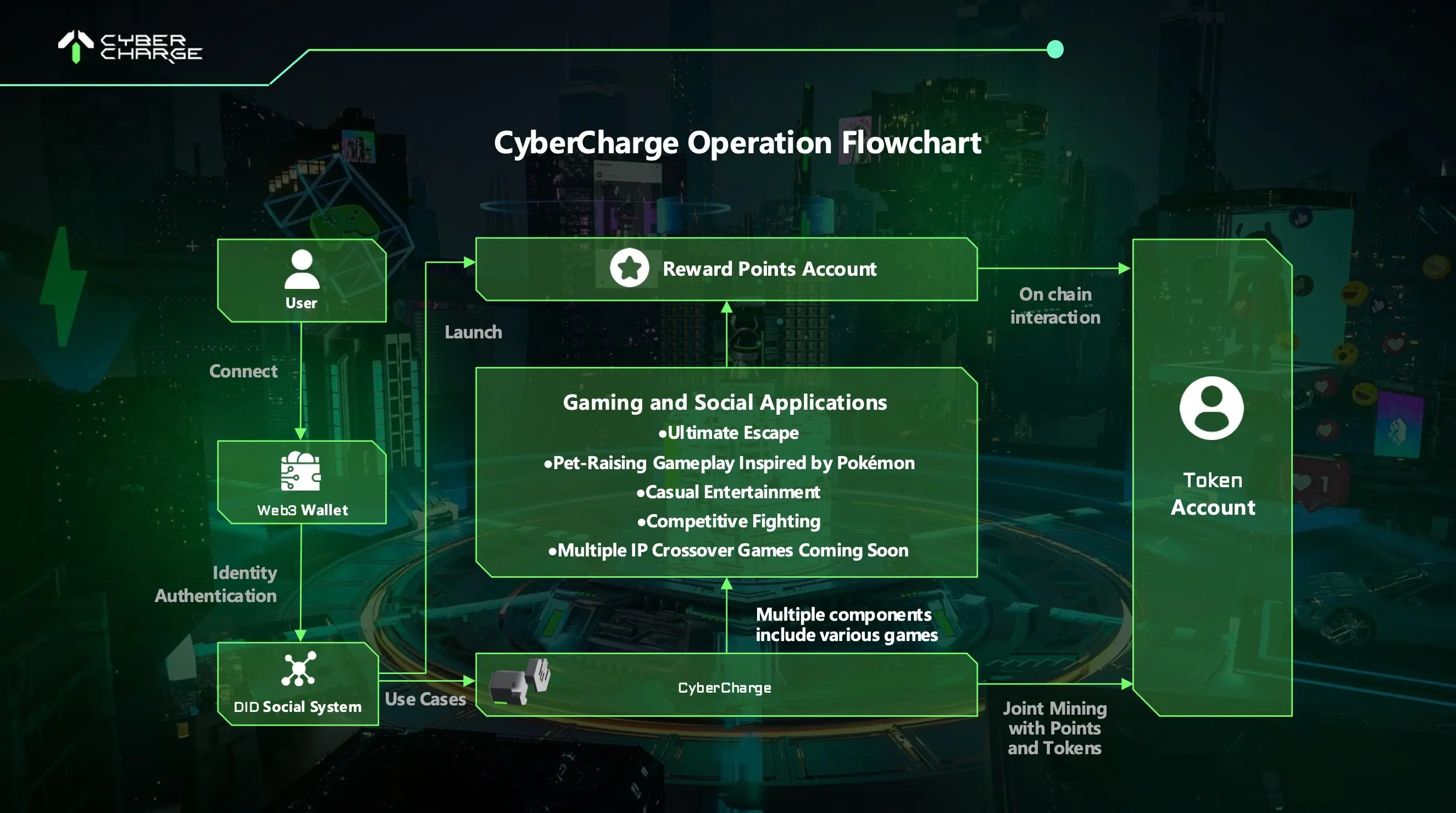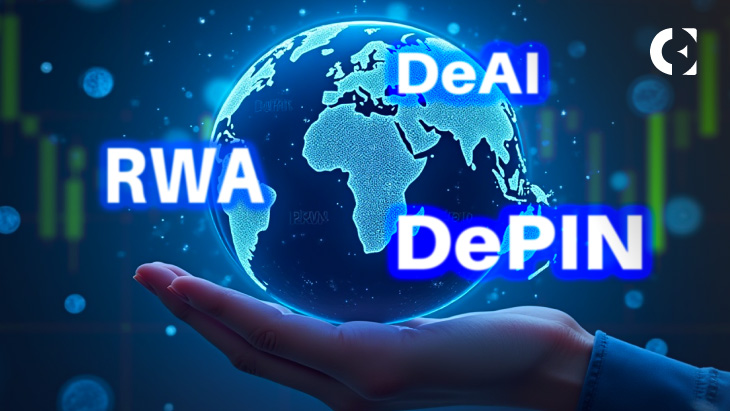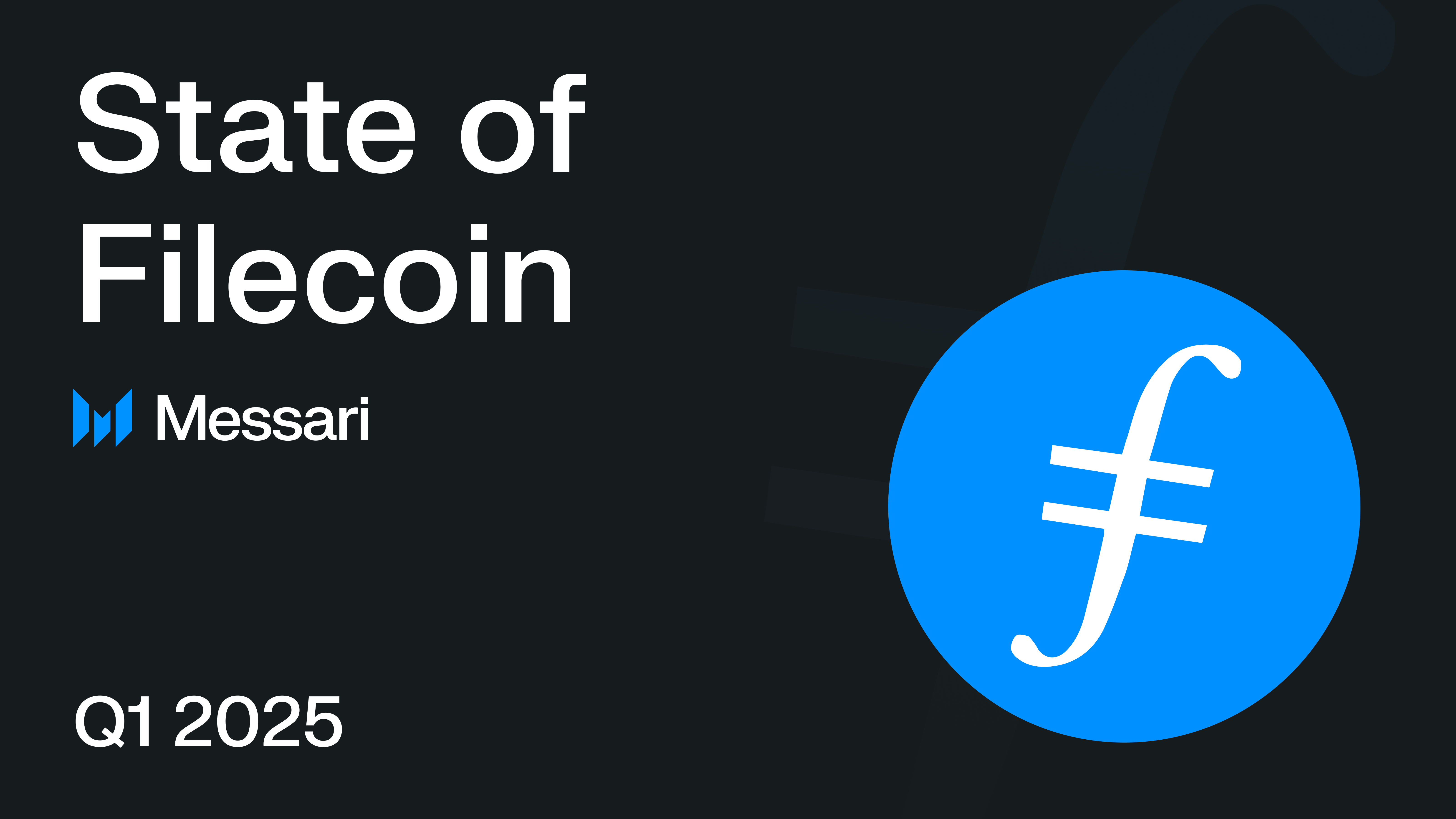Latest DePIN Funding News

7 months ago
Navigating the Challenges of DePIN: Insights from DIMO and CyberCharge
As decentralized physical infrastructure networks (DePIN) continue to develop, a significant issue has emerged: while the networks are built, the actual user engagement remains low. Many DePIN projects have seen a surge in node numbers due to incentivization, yet the demand for services has not kept pace, leading to resource idleness and limited network activity. This is particularly concerning as many projects target specialized use cases that require technical expertise or specific conditions, effectively excluding a large portion of potential users. This mismatch between supply and demand complicates the incentive structures, making it difficult to stabilize token values and risking a decline in participation.
DIMO stands out as a notable project within the DePIN sector, focusing on automotive data networks. The initiative encourages car owners to install hardware that collects operational data from their vehicles, which is then uploaded to a decentralized network. In exchange, participants earn DIMO tokens, promoting the idea of “data as an asset.” However, the project faces challenges such as high entry costs for hardware and a limited user base, primarily consisting of tech-savvy individuals. While DIMO has made strides in accumulating valuable driving data and forming partnerships, it must overcome barriers to participation and broaden its appeal to reshape the automotive data landscape.
In contrast, CyberCharge presents a fresh approach to DePIN by lowering participation thresholds and enhancing user engagement. Unlike DIMO, which requires specific hardware purchases, CyberCharge utilizes a smart charger that is more accessible and serves a practical purpose. This model encourages broader participation, as anyone with a mobile device can join. Additionally, CyberCharge fosters community engagement through interactive features, creating a more vibrant ecosystem. While still in its early stages, CyberCharge's innovative approach could redefine user interaction in the DePIN space, highlighting the potential for a new generation of projects to address existing challenges and engage a wider audience.

7 months ago
CUDOS at Consensus 2025: Pioneering Decentralized Compute Solutions
The recent Consensus 2025 event highlighted a pivotal shift in the blockchain landscape, emphasizing that decentralized infrastructure has become a necessity rather than an emerging trend. CUDOS took center stage, engaging with Web3 developers and AI infrastructure teams, showcasing their commitment to providing scalable, permissionless, and privacy-preserving compute solutions. The focus was clear: to eliminate gatekeepers and opaque pricing structures that often accompany centralized platforms, thereby promoting a truly decentralized computing environment through the CUDOS Intercloud initiative.
Throughout the event, various themes emerged, particularly around policy and regulation, which are expected to shape the future of blockchain innovation. Keynotes emphasized the growing importance of programmable stablecoins designed to operate outside traditional financial systems, highlighting the increasing demand for reliable infrastructure. The Hackathon Hall buzzed with activity as AI builders and decentralized physical infrastructure (DePIN) projects explored innovative solutions for decentralized inference, mining, and data services. Participants were not only focused on current developments but also on the future of Web3 and the role of AI in driving the next wave of innovation.
CUDOS stands out in this evolving landscape by offering digital wallet-authenticated access to high-performance GPU nodes without the need for accounts or KYC processes. Their cross-chain compatibility makes them a suitable choice for AI, DePIN, and Web3-native applications. As the demand for decentralized compute solutions grows, CUDOS Intercloud is positioned to support projects that require scalable infrastructure without the constraints of centralized control. The message from Consensus 2025 is clear: decentralized compute is essential for the future of AI, blockchain, and digital sovereignty, and CUDOS is at the forefront of this transformation.

7 months ago
IPFS Revolutionizes Data Transmission in Space with Filecoin and Lockheed Martin
The Interplanetary File System (IPFS) has made significant strides in reducing latency for data transmissions in space, as demonstrated by a successful collaboration between the Filecoin Foundation and Lockheed Martin Space. During the Consensus 2025 conference in Toronto, Marta Belcher, president of the Filecoin Foundation, revealed that they have successfully transmitted data using a version of IPFS on a satellite orbiting Earth. This adaptation enhances privacy and security by identifying data based on its content rather than its location, which is particularly beneficial for space communications. The architecture of IPFS is designed to mitigate delays, address data corruption from radiation, and enable cryptographic verification to ensure data integrity.
Belcher highlighted the challenges of data transmission from celestial bodies, noting the multi-second delay from the Moon and multi-minute delay from Mars. The IPFS system allows users to retrieve data based on a content ID from the nearest source, whether it be a personal device, a nearby satellite, or a lunar station. This decentralized approach reduces reliance on centralized data centers and improves the reliability of data storage in environments where hardware may degrade, which is crucial for maintaining the integrity of sensitive materials like satellite images.
The growing interest in decentralized archival storage among media companies and potential military applications of this technology indicate a promising future for IPFS. Belcher emphasized the power of having a deep archive accessible globally, which could revolutionize how media and military organizations manage their data. Additionally, the FIL token, a utility token within the Filecoin ecosystem, boasts a market capitalization of approximately $1.8 billion, reflecting the increasing relevance of decentralized storage solutions in today's digital landscape.

7 months ago
Amp and Aethir Shine Amidst Crypto Market Cooling
In a cooling crypto market, Amp (AMP) and Aethir (ATH) have emerged as standout performers, each experiencing a notable 16% increase in value. Amp is currently valued at $0.0051, buoyed by strong bullish momentum supported by key Exponential Moving Averages (EMAs) and favorable trading signals from indicators like MACD and RSI, despite warnings of overbought conditions. Meanwhile, Aethir, which focuses on AI-driven blockchain solutions, has surged to $0.052, breaking past significant resistance levels and maintaining bullish optimism, although the overbought RSI suggests that traders should remain vigilant.
The divergence in the crypto market is evident as Helium (HNT) faces downward pressure, trading at $4.00 and struggling below the critical 200-day EMA. This situation poses a risk of further declines if it breaches the 100-day EMA support at $3.83. The contrasting trajectories of Amp and Aethir against Helium highlight the persistent volatility and innovation within the digital asset market, prompting traders to balance ambition with risk management strategies.
As traders navigate these turbulent waters, the resilience of Amp and Aethir underscores the potential for growth even amid market stagnation. Investors are encouraged to monitor key technical indicators closely, particularly EMAs and RSI levels, to identify optimal entry points and manage risks effectively. The ongoing developments in these projects reflect the dynamic nature of the cryptocurrency landscape, where innovation continues to drive interest and investment opportunities.

7 months ago
Crypto Market Resurgence: Theta, Gala, and PayFi Lead the Charge
The crypto market is experiencing a resurgence, with notable gains in tokens like Theta, Gala, and Sandbox, which have reignited interest in the metaverse and GameFi sectors. Theta Network has seen a remarkable 37% price increase, buoyed by a partnership with Nanyang Technological University to develop EdgeCloud AI infrastructure. This collaboration aims to enhance decentralized video streaming and NFT platforms, positioning Theta as a leader in AI-powered Web3 services. Despite a slight price correction, the overall trend remains bullish, reflecting growing investor confidence.
Gala Games is also riding a wave of optimism, with its token GALA surging nearly 47% following a high-profile partnership with the White House to create a Web3-based Easter Egg Hunt game set for 2025. This unexpected collaboration has not only boosted GALA's price but also sparked interest in the GameFi sector, leading to a broader uplift in the crypto market. The sustained gains and high buying interest indicate a strong recovery and renewed enthusiasm among investors, showcasing Gala's potential for mainstream adoption.
Amidst these developments, PayFi is emerging as a transformative force in the crypto landscape. Platforms like Remittix are redefining cross-border payments by enabling instant crypto-to-fiat transfers without requiring users to have extensive crypto knowledge. With support for over 50 crypto pairs and a user-friendly interface, PayFi is poised to revolutionize real-world finance. As the crypto market continues to evolve, the focus on practical innovations like PayFi suggests that 2025 could mark a significant shift toward mainstream adoption of blockchain technology in everyday financial transactions.

7 months ago
Exploring the Growth of RWAs, DePINs, and DeAI in 2025
In May 2025, the tokenization of real-world assets (RWAs) has surged, reaching a valuation of $22.5 billion, with projections suggesting it could hit $50 billion by the end of the year. This growth is largely attributed to the increasing integration of decentralized finance (DeFi) with traditional financial assets, such as real estate and government bonds. Notably, institutional investors like BlackRock and Goldman Sachs are playing a pivotal role in this expansion. The U.S. Securities and Exchange Commission (SEC) has also shown a commitment to this sector by hosting a tokenization roundtable, signaling a positive regulatory environment for RWAs. Analysts predict that the RWA market could grow to a staggering $10 trillion by 2030, highlighting its potential to dominate the crypto landscape in the coming years.
Alongside RWAs, the Decentralized Physical Infrastructure Networks (DePIN) market is projected to reach $3.5 trillion by 2028. DePIN aims to revolutionize physical infrastructure by utilizing blockchain technology to create decentralized networks for computing, storage, and connectivity. This innovative approach could disrupt various industries, including telecommunications and IoT. Leading projects such as Theta Network and Akash Network are at the forefront, providing cost-effective solutions for AI workloads and IoT applications. The growing interest in decentralized energy grids and smart cities further emphasizes the importance of DePINs in the evolution of Web3.
The Decentralized Artificial Intelligence (DeAI) sector is also on the rise, merging blockchain with AI to foster transparent and censorship-free ecosystems. With the AI and RWA crypto token market already valued at over $65 billion, DeAI is poised for significant growth, driven by advancements in decentralized computing. Platforms like SingularityNET and Fetch.ai are leading the way in creating decentralized AI models. The interconnectedness of RWAs, DePINs, and DeAI suggests a synergistic relationship that could redefine the future of the crypto cycle in 2025, provided that challenges such as scalability and regulatory hurdles are effectively addressed.

7 months ago
Helium: Revolutionizing Telecom with Decentralized Networks
Helium is making waves in the telecom industry by leveraging cryptocurrency to build what could be the most disruptive network in America. Originally starting as an Internet of Things (IoT) initiative, Helium has transformed into the world’s largest decentralized wireless network. With the support of the Decentralized Physical Infrastructure Network (DePIN) movement, Helium is redefining how infrastructure is constructed. Abhay Kumar, Helium's Protocol Lead, emphasized the company's mission: to create wireless infrastructure that fosters innovative business models. This evolution has allowed Helium to expand its services to include both IoT and 5G mobile networks, solidifying its position in the DePIN landscape.
The transition from connecting devices to connecting people has been pivotal for Helium. The launch of Helium Mobile, a new carrier, exemplifies this shift. In the U.S., users can access a free cell phone plan or opt for a limited plan at just $15 per month. Kumar attributes this affordability to Helium's unique protocol, which significantly reduces bandwidth costs for carriers. By utilizing the Helium network, carriers pay only 50 cents per gigabyte, a stark contrast to traditional pricing models. This cost efficiency is largely due to the DePIN model, which incentivizes individuals and businesses to install wireless nodes, such as 5G radios, in exchange for cryptocurrency rewards.
Helium's decentralized infrastructure approach has emerged as a leading example of the potential of DePIN. Kumar noted the company's fortunate timing in establishing this model before it became widely recognized. By allowing local shop owners to contribute to the network, Helium not only enhances customer satisfaction but also enables carriers to extend their reach. The collaborative nature of this model benefits all parties involved, showcasing how decentralized networks can revolutionize the telecom sector and create sustainable business practices.

7 months ago
Filecoin's Strategic Shift: Emphasizing High-Value Storage and Ecosystem Growth in Q1 2025
In Q1 2025, Filecoin made significant strides in its evolution as a decentralized storage network, deploying over 5,000 unique contracts on the Filecoin Virtual Machine (FVM) and facilitating more than 3.2 million transactions. The upcoming launch of Proof of Data Possession (PDP) and the Filecoin Fast Finality (F3) upgrade are set to enhance transaction settlement speeds and data verification processes. Partnerships with AI and blockchain networks, including Aethir and Cardano, have further solidified Filecoin's position as a reliable platform for decentralized data storage, while the introduction of FIL ProPGF aims to support public goods development within the ecosystem.
Despite a decline in active storage deals and overall network utilization, which fell to 30%, Filecoin is pivoting towards high-value, enterprise-grade storage solutions. Approximately 1,300 petabytes of data were stored through active deals, reflecting a strategic focus on long-term, quality storage rather than sheer volume. Collaborations with institutions like the Smithsonian and MIT highlight Filecoin's commitment to preserving cultural and academic data, while the introduction of USDFC, a FIL-collateralized stablecoin, facilitates stable payments and DeFi participation without the need to liquidate FIL holdings.
The network's financial landscape also saw a decline, with FIL’s market cap dropping 41% to $1.8 billion amid a broader market downturn. However, engagement with Filecoin-native services remained strong, evidenced by increased FIL inflows. The Network v25 upgrade and the anticipated F3 upgrade are expected to streamline operations and enhance user experience. As Filecoin continues to adapt and innovate, its focus on high-value storage, partnerships, and community-driven initiatives positions it for sustained growth in the evolving decentralized landscape.

7 months ago
Solana's Recovery and the Rise of AI-Driven Projects Bittensor and Unilabs
Solana (SOL) has shown a remarkable recovery, bouncing back 90% from its lowest point this year, yet it remains constrained below the critical resistance level of $180. Analysts are optimistic, suggesting that the Solana price could be on the verge of a significant breakout, particularly as many SOL meme coins have recently surged. The current market sentiment is buoyed by strong fundamentals and an upward trajectory, with SOL hovering around the $170 mark. A decisive move above the $180 resistance could pave the way for a potential rise towards $200 and beyond, possibly reaching levels around $250.
In the midst of this, Bittensor (TAO) has emerged as a notable player, maintaining a steady performance while other cryptocurrencies, including Bitcoin (BTC), have struggled. The interest in Bittensor is largely driven by its innovative approach to decentralized AI, which has gained traction following high-profile events, such as Donald Trump's attendance at a crypto and AI innovators dinner. Currently trading around $457, Bittensor has demonstrated resilience, holding onto gains and reflecting a growing market confidence in projects that integrate blockchain technology with AI.
Meanwhile, Unilabs (UNIL) is gaining momentum as a compelling alternative for investors looking to diversify from traditional layer-1 networks like Solana. With a focus on merging blockchain transparency with AI infrastructure, Unilabs is positioning itself as a leader in the DeFi and AI space. Its innovative model, which includes a token-based incentive system, aims to attract users and developers alike. As Solana's growth stalls, Unilabs presents a unique opportunity for traders, potentially redefining the standards for DeFi AI platforms in a rapidly evolving crypto landscape.

7 months ago
Unilabs Leads the Charge in DeFi with AI-Driven Investment Strategies
The cryptocurrency market is experiencing a resurgence after a recent downturn, with Bittensor (TAO) breaking through its resistance levels and showing promising upward momentum. In tandem, Solana is also showing signs of a potential uptrend, following a period of stagnation. However, Unilabs is emerging as a standout project in this environment, having attracted over $30 million in assets under management (AUM) through its innovative passive income approach. Experts are highlighting UNIL as a project to watch closely in 2025, given its unique offerings in the decentralized finance (DeFi) space.
Unilabs is making waves as the world’s first AI-backed hedge fund manager, designed to give investors a competitive edge in the market. The platform incentivizes users through staking rewards for UNIL tokens and referral bonuses, which have contributed to its impressive AUM. With over 21 million UNIL tokens sold, the project offers access to four investment funds that span Bitcoin, real-world assets (RWA), artificial intelligence (AI), and mining sectors. Additionally, its AI Market Pulse tool provides valuable insights into investment opportunities, while the Memecoin Identification Tool aids high-risk traders in navigating the volatile memecoin landscape.
As the presale continues to gain traction, having already surpassed $114,000, each token is priced at $0.004, with expectations of a price increase in future rounds. Meanwhile, Bittensor has recently experienced a significant price increase, trading at $481 after a breakout above the $460–$470 resistance level. Similarly, Solana has regained momentum, currently trading around $176 after a notable rise. Both projects are capturing market attention, but Unilabs' innovative asset management features are poised to revolutionize crypto investment, making it a key player to watch in the coming months.
Signup for latest DePIN news and updates